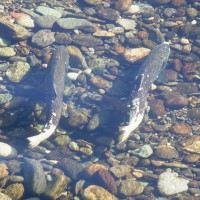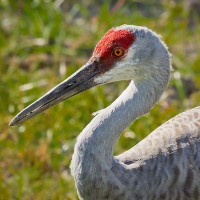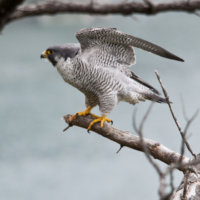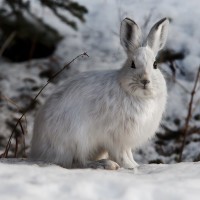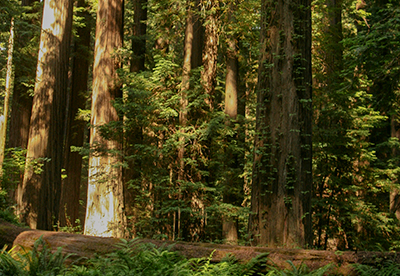What We Do:
Save Wildlife Habitat
For every nook and cranny in a forest, there are animals and plants that call it home. Just as we do, animals need food, fresh water, room to roam, and places of refuge. Conserving and revitalizing wildlife habitat ensures both animals and humans have a healthier future ahead.
Animals are particular about their habitats; it’s not one-size-fits-all. They need all of the variety that a healthy forest provides in order to thrive. As the Earth’s climate changes, many species are migrating in search of new homes. These animals, if they’re able to relocate, rely on connected forest landscapes in order to move from place to place.
As human populations and demands for resources increase, our forested habitats are suffering. With every acre of forest lost to development or sweeping industrial timber harvests, wildlife habitats are shrinking and breaking apart. The United States’ private forests especially—60% of all forests in the country—are losing the natural richness that keeps thousands of plants and animals alive. That’s why we are working with private landowners to manage their forests sustainably, across ownership boundaries, to benefit the wildlife and plants that live within them.
How We Save Wildlife Habitats
We are dedicated to connecting critical wildlife habitat, balancing ecological, economic, and social needs.
We Create a Different Kind of Forest Economy
For most landowners, their forests are a source of wood products and revenue, and their decisions about how to manage their lands are driven by market forces. Our work creates a market pull for conservation.
We developed the Working Forest Conservation Easement, a legal designation that protects land from subdivision and development forever while guiding forest management to achieve habitat protection and restoration. This gives landowners the financial resources and flexibility they need to steward complex forest habitats and sustainably harvest timber resources at the same time.
We Restore and Safeguard WILDLIFE HABITATS—PERMANENTLY
Working Forest Conservation Easements permanently protect the special habitats and species of concern for each landscape. As we work with landowners to set up new conservation easements, we develop plans to provide permanent protections and pathways to restore habitats for wildlife. Working Forest Conservation Easements allow landowners to cultivate healthy and diverse habitats for all walks, crawls, and slithers of life to survive.
We Protect LIVES AND LIVELIHOODS
By developing policies and best practices, we make it easier for landowners to manage their forests and protect wildlife at the same time. Many times, managing for more natural forest conditions creates exactly the kind of homes that vulnerable species need, especially those animals protected by state and federal Endangered Species Acts.
We worked with state and federal wildlife agencies to develop a streamlined, two-step approach for obtaining Safe Harbor Agreements, a voluntary deal that provides assurances for landowners who contribute to the recovery of listed species. With a working forest conservation easement, landowners can “pre-qualify” for a Safe Harbor Agreement. This way threatened species get the habitat they need, and landowners avoid costly fines or delays when they work their land.
We Enhance Wildlife Habitats
We provide financial and technical support to help our landowners and agency partners kick-start hundreds of acres of habitat enhancement projects, which improve rare habitat on privately owned, managed forestland. We are currently focusing on restoring wet meadow and aspen habitats as well as managed conifer forests with old-growth qualities.
HOW YOU CAN HELP
Help conserve America's forests.
Stay in-the-know. Get the latest news.
News & Events
Donor Highlight: Erik Wohlgemuth
Winter 2025 Donor Highlight: Erik Wohlgemuth Erik Wohlgemuth is CEO of Future 500, and Secretary for PFT’s Board of Directors. Erik’s expertise spans environmental strategy, as well as the private and NGO sectors. We asked him about his love of forests and his...
Engaging the Next Generation on Mount Ashland Demonstration Forest
Winter 2025 Engaging the Next Generation on Mount Ashland Demonstration Forest PFT is continuing its mission to advance climate-resilient restoration through our Mt. Ashland Demonstration Forest (MADF), a vital outdoor classroom for local students. This 1,130-acre...
Documenting the Tallest Trees: A Conversation with Michael Taylor
Winter 2025 Documenting the Tallest Trees: A Conservation with Michael Taylor Pacific Forest Trust supports Michael Taylor’s work documenting the tallest, biggest trees in California and beyond. Here, he shares some of his findings and motivations. 1. What compels...




